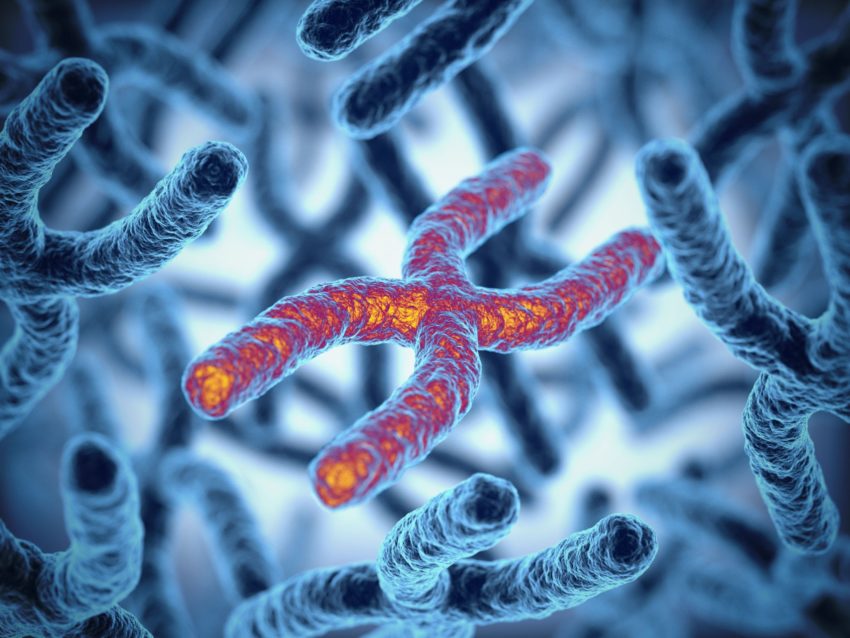This is an archival of the following Twitter thread by Dr. Emma Hilton: https://twitter.com/FondOfBeetles/status/1111352888385769472
Here follows some data from karyotype studies in newborns. These are cohort studies, systematically recording birth sex, sex chromosome conformation and any notable phenotype in sequential births at maternity units over extended periods of time.
Maternity units were not specialist, and covered a wide range of demographics. Karyotype analysis was performed on blood samples and scored across multiple cells (typically, 30) from each newborn, to detect mosaicism.
Any unusual results were followed up with further investigations along standard medical pathways.
Important note on “mosaicism”: In this context, it means different cells containing different sex chromosomes. Every fertilised egg starts with a base set. During subsequent cell division, errors can occur that mean chromosomes are lost/chucked out.
The earlier in development such losses happen, the greater the potential effect on further development. If the original conformation, say XXY, and derivations thereof, say XY (loss of X), drive the same sex differentiation, we predict no complications.
If the original conformation, say XY, and derivations thereof, say X (loss of Y), drive opposing sex differentiation, there is potential for unpredictable (but not necessarily ambiguous) outcomes. I will denote mosaic karyotypes in shorthand, for example, XXY/XY.
So, the numbers…. I collated nine large cohort studies covering 64811 newborns, 35180 typical males and 29631 typical females.
Of 35180 newborns observed as typical male, 35089 were XY (99.74%). Within these XY karyotypes, 9 instances of structural defects in the Y chromosome were recorded (Y chromosomes are unstable, so sections of them can, for example, become inverted).
The major chromosome anomalies identified were XXY (Klinefelter; 40 males) and XYY (Jacobs; 34 males). Mosaic XXY/XY was identified in 6 males, and mosaic XYY/XY in 7 males. These mosaic karyotypes all drive male development.
3 males had mosaic karyotypes featuring both male and female-typical arrangements. 2 were XYY/XY/X and 1 was XY/X. All 3 were typical male, suggesting that the X founder arose in a tissue uninvolved in sex differentiation, or later than sex differentiation occurred.
1 typical male newborn had an XX karyotype. I have been unable to track this case to see if he was tested for the presence of the SRY (“make male” gene) on one of these Xs. 80% of XX males have this transposition, so it is likely the case here.
1 male (not included in the counts above) had an XY karyotype and was recorded as having ambiguous genitalia. From the detailed phenotypic description, I suspect Partial Androgen Insensitivity Syndrome.
Of the 29631 newborns observed as typical female, 29585 were XX (99.84%). Within these XX karyotypes, 1 instance of a structure defect in an X was recorded.
The major chromosome anomaly identified was XXX (31 females). 3 females were X (Turner). Mosaic X karyotypes identified were XX/X (4 females), XXX/XX (2 females), XXX/X (2 females), and XXX/XX/X (1 female).
3 females had mosaic karyotypes featuring a Y chromosome. 2 were XY/X and 1 was XYY/XY/X. All three were likely conceived as genetic males, but lost Y from tissues important in reproductive development, hence differentiating as females.
No females were recorded as having ambiguous or virilised genitalia. No females were found to have an XY karyotype.
Fun fact 1: The XY/X karyotype usually underpins the phenomenon of “XY female gives birth!” Most likely, these females have lost a Y during gonad differentiation and thus, have ovarian tissue that drives female development.
Fun fact 2: 1 of the XYY/XY/X males and the single XYY/XY/X female were twins, both typical of their sexes. This demonstrates perfectly how “reading” mosaic karyotypes does not always allow accurate sex prediction.
TLDR. In 64811 newborns, 64674 (99.79%) were either XY or XX in accordance with observed sex. Of the 137 with chromosome anomalies, 130 (94.89%) were sex-typical. Thus, 99.99% of people have sex chromosomes entirely in accordance with their external genitalia.
Prompted by a few responses, I must add a caveat. This is simply an analysis of how well sex chromosomes match observed genitalia. Within that cohort, there will be newborns who have intersex anomalies not revealed by those data.
The thread is intended as a response to the (false) assertion that sex chromosomes are somehow frequently variable. They are not. And when they DO deviate from XX or XY, it is usually along sex-typical lines.
I forgot to add references yesterday, and am away from my list. My memory and a brief scan around gives me: Hamerton 1975 https://ncbi.nlm.nih.gov/pubmed/1183067 Maeda 1991 https://ncbi.nlm.nih.gov/pubmed/2062008 Jacobs 1974 https://ncbi.nlm.nih.gov/pubmed/4277977 These account for a huge chunk of these total number.
